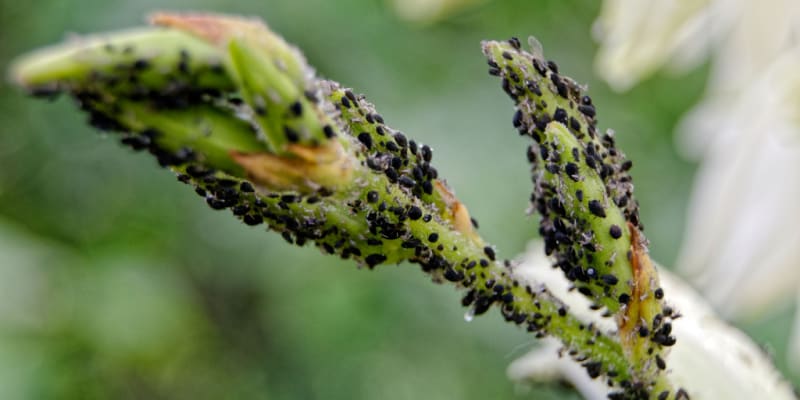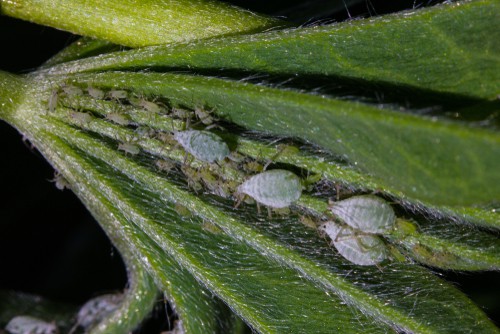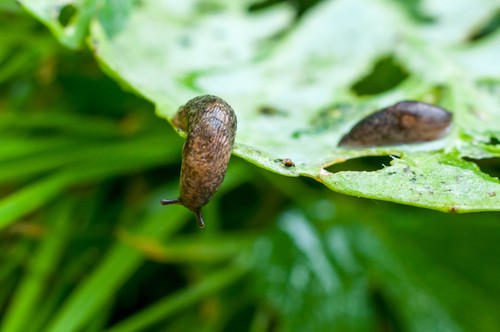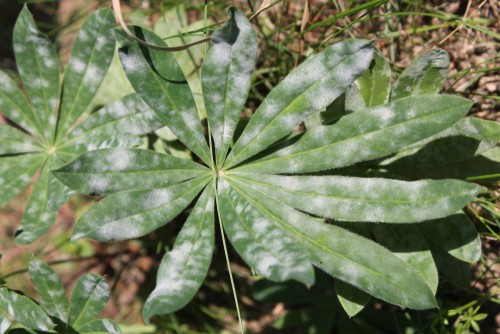
Lupin pests and diseases
Our site is reader supported, this means we may earn a small commission from Amazon and other affiliates when you buy through links on our site.
Lupins are one of my favourite plants, and having grown Lupins for over 30 years, I’m no stranger to some of the many Lupin pests and diseases, and I recently talked about what was eating my lupins here. They are mainly the common ones that affect most perennials including aphids, as well as powdery mildew which is a Fungus, but there are a few more, so in this guide, I explain what they are and what to do about them.
Pests that attack lupins
Aphids
Aphids are Lupin’s biggest pest enemy, and I’d be surprised if you have not seen them on other plants as well. Greenfly especially are prone to attack these lupins. There are actually over 500 aphid species. However, there is one particular type, the Lupin aphid (Macrosiphum albifrons) that originates from North America and is now widespread across US and UK. They infest the leaves of the lupin plant and disfigure them thus inhibiting the development of the lupin blooms.
What to do
As soon as you notice the dots of the green flies on the leaves, start to treat it with horticultural oil. It helps to pinch off the most heavily infested leaves or to even prune off infested stems. Ladybirds, hoverflies, parasitoid wasps, earwigs and ground beetles are the natural enemies of aphids so encouraging these into your garden may help to keep the aphid population down. Your last resort should be a pesticide but it’s certainly an option.
I would recommend using organic sprays first such as Neudorff Bug Free Bug and Larvae Killer but you can also use pesticides such as Westland Resolva Bug Killer or Provanto Sprayday Greenfly Killer. Most pesticides will kill aphids.
Slugs and snails
In the spring when the new lupin shoots appear, you may notice slug and snail damage on the stems and foliage. It looks like something is easting your plant, and it is. This is obviously very common and it’s usually teh fresh spring foliage that is most at risk.
What to do
If you’re vigilant, every evening you can manually pull the slugs and snails off your plant. Putting copper rings around the lupins or copper tape around pots will deter the snails and slugs from crawling up them. Alternatively, you can purchase wildlife-friendly slug pellets that do the same thing. You can also try adding a layer of horticultural grit around the base of plants as they dislike crawling over it. You can also but slug traps too.
Learn more ways to deter slugs and snails in my guide here
Diseases that attack lupins
Powdery mildew
Powdery mildew is by far the most common fungal disease to plague lupins (and many other plants). This usually appears after a period of wet or moist weather, especially if there’s poor air circulation around the plant, and as many perennials’ beds are densely planted this doesn’t help either. It shows up as patches of white powder on the leaves. It’s not fatal to the plant but it does deter from the lupin’s visual attractiveness.
What to do
There’s a variety of things you can do for powdery mildew, all of which work best at the start of the disease cycle.
First of all, you can simply cut away the diseased foliage to encourage new healthy growth. If most of your plant is infected, this may mean cutting it back to the ground to start with a clean growth slate. If you get a chance to do this after the first set of flowers, you will likely get more flowers even if you cut them back hard.
You can also prune the plant to improve the air circulation. Take out some of the stems from the interior of the plant and remove some of the leaves from the outer branches. This helps to prevent the initial growth of the fungus.
As a further prevention, be sure not to overwater the plants; you don’t want them to be standing in water-logged soil and don’t water from above. This is one of the reasons I have nowed installed an automatic watering system. Watering from above creates wet leaves which powdery mildew loves as a growing environment.
Try spraying the plant, first with a horticultural oil. This is kinder to insects than the fungicides that you might need to follow up with. I usually just spray with a fungicide at the first signs of mildew as my own lupins seem to suffer from it every year.
Root rot
Root rot is another common fungal disease that affects all kinds of plants, including lupins. It starts in the root before you notice a kind of white mushroom mass growing around the plant’s crown – that’s the part of the root and trunk closest to the soil. The mass looks a bit like cotton. Root rot arises when the soil is overly wet.
What to do
The best thing to do is to uncover the root and to remove all the wet, rotten parts. If this is most of the root ball, you’ll have to admit that the plant has had it, dig it up and destroy it. Don’t put it in your compost bin as this is a fungus that easily spreads through the soil.
As root rot can spread up the stem of the plant and become stem rot, check over all of the plant. Remove the affected stems as well. And consider replacing the top layer of soil with fresh and clean top soil.
Improve the soil in which the lupin stands so it drains well as waterlogged soil is the main cause. I use grit or perlite to make the soil better draining. If you can’t improve the soil, consider transplanting the healthy part of the plant a better area of the garden. You can also consider growing lupins in pots too.
Important note:
All parts of the lupin can be poisonous to people and to animals. Be sure to wear gloves when working with them.


